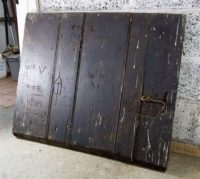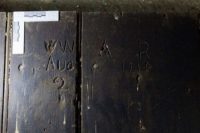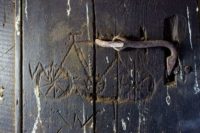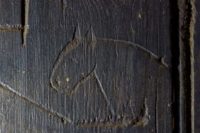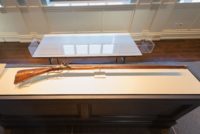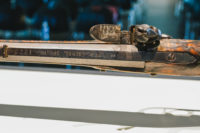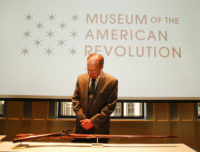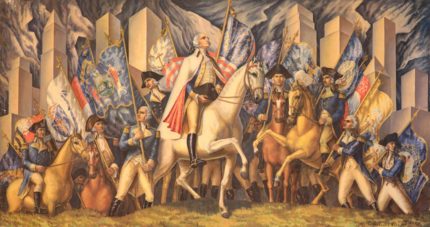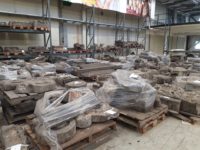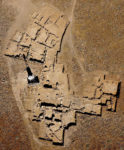 That famous dark red/purple dye so prized by ancient Mediterranean peoples for its depth of color that only increased with time is still known today as Tyrian purple because it was produced and traded extensively by Phoenicia and its colonies. Archaeological evidence points to the Minoans as having beaten the Phoenicians to the punch by centuries. An excavation on the islet of Chryssi in eastern Crete has unearthed remains of an early Minoan-era dye production facility.
That famous dark red/purple dye so prized by ancient Mediterranean peoples for its depth of color that only increased with time is still known today as Tyrian purple because it was produced and traded extensively by Phoenicia and its colonies. Archaeological evidence points to the Minoans as having beaten the Phoenicians to the punch by centuries. An excavation on the islet of Chryssi in eastern Crete has unearthed remains of an early Minoan-era dye production facility.
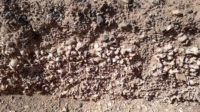 The purple dye was manufactured by extracting the secretion from the hypobranchial gland of murex sea snails. The carnivorous molluscs release a bromine compound when attacked, so dye could be extracted by poking and prodding the snails, thus keeping them alive for further production. Much more common, however, was the destruction of the snails and removal of the gland. It was resource-intensive, time-consuming and, according to ancient chroniclers, eye-wateringly smelly work that required processing literally thousands of murex just to produce enough dye for even a single stripe like one on the toga praetexta worn by Roman magistrates.
The purple dye was manufactured by extracting the secretion from the hypobranchial gland of murex sea snails. The carnivorous molluscs release a bromine compound when attacked, so dye could be extracted by poking and prodding the snails, thus keeping them alive for further production. Much more common, however, was the destruction of the snails and removal of the gland. It was resource-intensive, time-consuming and, according to ancient chroniclers, eye-wateringly smelly work that required processing literally thousands of murex just to produce enough dye for even a single stripe like one on the toga praetexta worn by Roman magistrates.
The Chryssi settlement was inhabited from 1800-1500 B.C. and evidence of murex processing, including stone tanks used to farm the sea snails, have been found in structures from the early end of the range. The most recent excavations of a later building from ca. 1500 B.C. revealed murex shells were used in the construction of its walls.
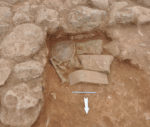 The large building, B2, is relatively simple in architectural features with focus on practical elements like work surfaces, stoves, slab staircases. Stone tools and pottery types used for cooking and storing food have been recovered from the building. Workmanlike or not, the contents of the dwellings were expensive, high-quality pieces including precious metals, gemstones, copper pots and talents.
The large building, B2, is relatively simple in architectural features with focus on practical elements like work surfaces, stoves, slab staircases. Stone tools and pottery types used for cooking and storing food have been recovered from the building. Workmanlike or not, the contents of the dwellings were expensive, high-quality pieces including precious metals, gemstones, copper pots and talents.
It contained a golden ring, 26 golden beads and a golden bracelet, a silver bead, 5 copper ones and a copper ring sling along with a large number of glass beads of various shapes, four of the so-called Egypt blue, 10 from lapis lazuli, one from amethyst and 20 from carnelian, a seal made of agate with the picture of a ship that its stern had the form of an animal’s head and a stone amulet with the shape of a monkey.
In 2019’s excavations another ‘treasury’ was unearthed that included a big saw and three vases, all made of copper. Their total weight was 68 kilos. It is one of the largest found on Crete so far. Inside a vase, they also found part of a talent made of tin.
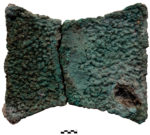 This is only the second tin talent found on Crete.
This is only the second tin talent found on Crete.
The newly-discovered evidence indicates the building was used by people involved in the production and trade of purple dye. Wealthy, but a mercantile rather than a ruling elite.
